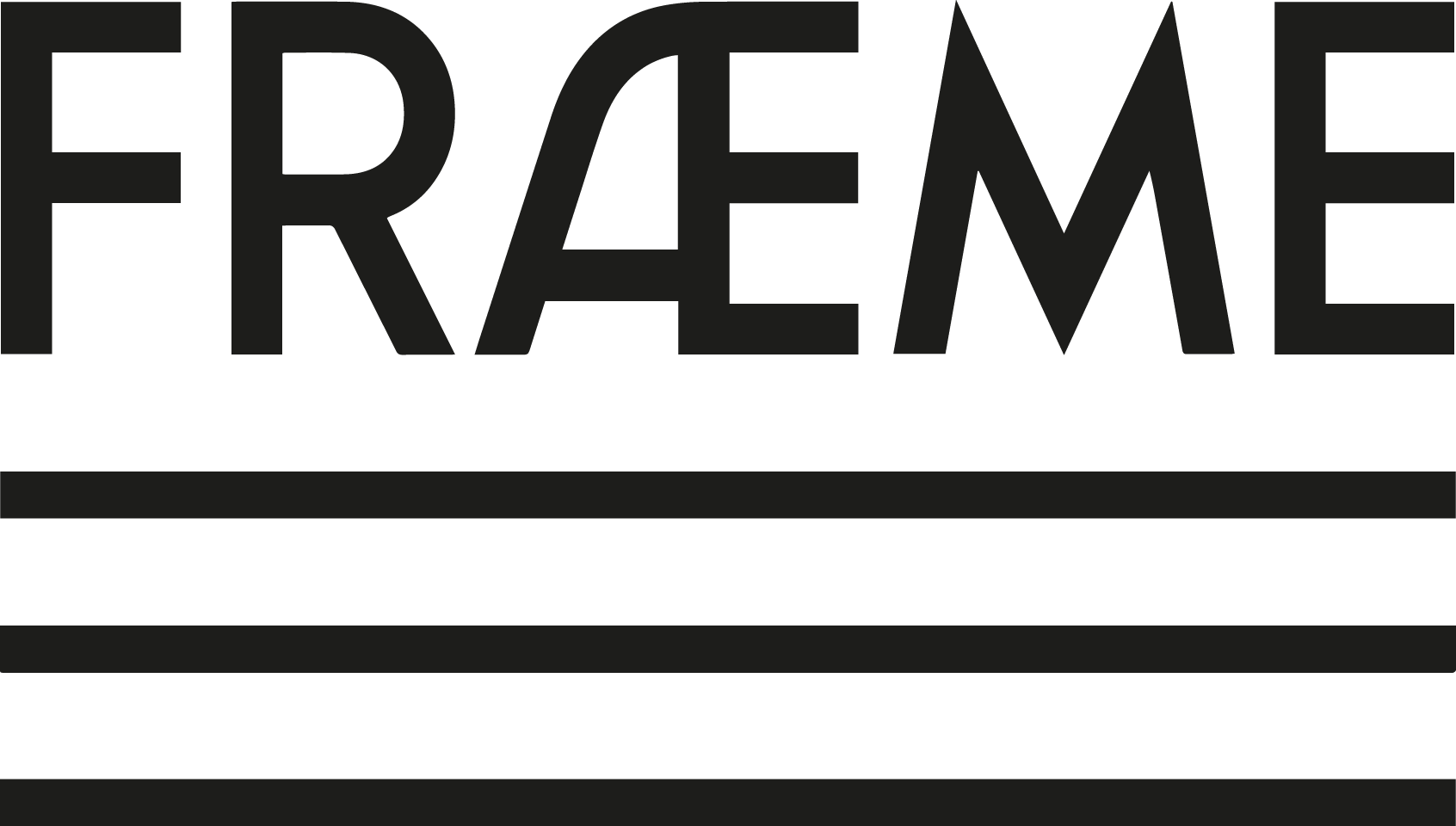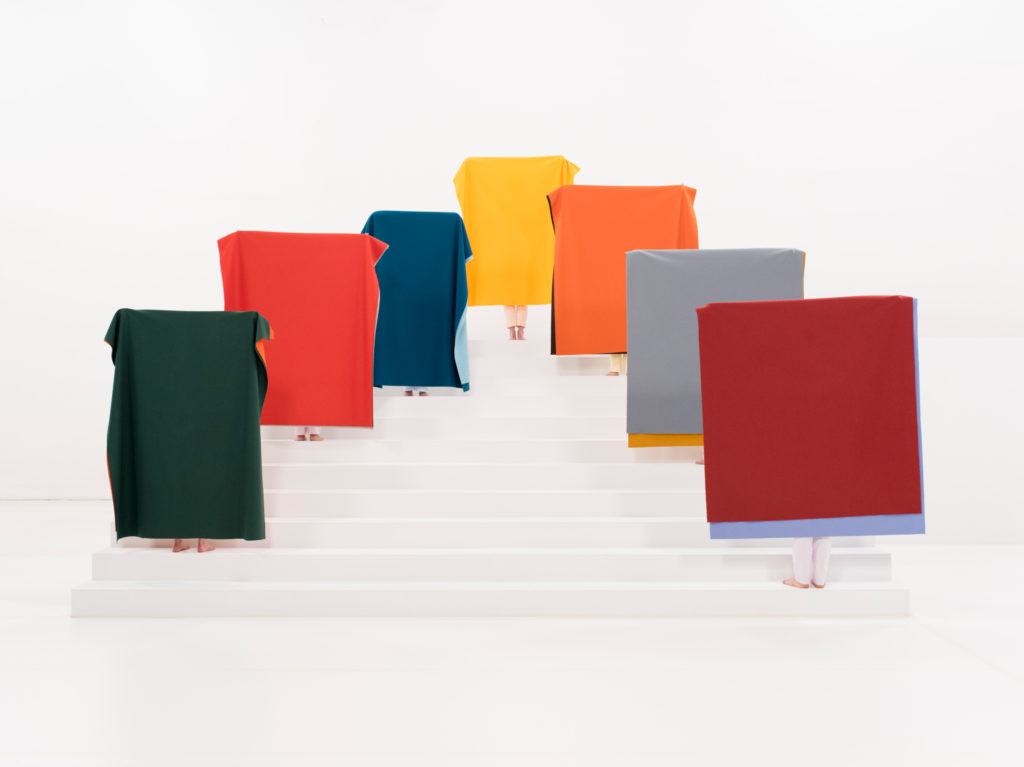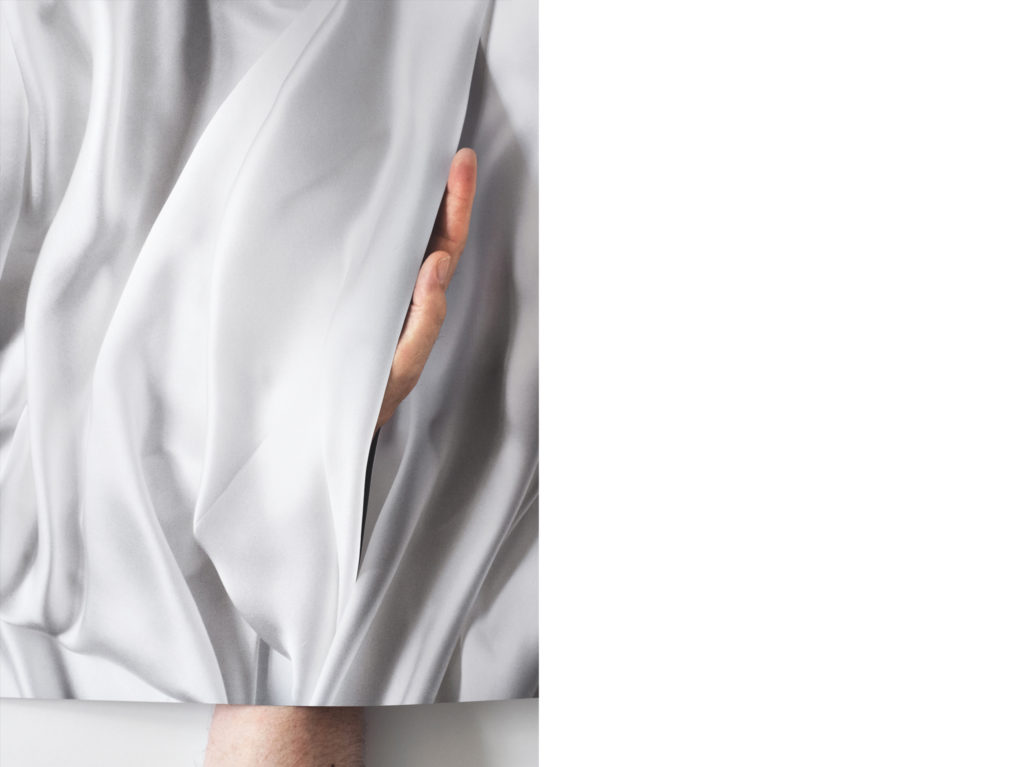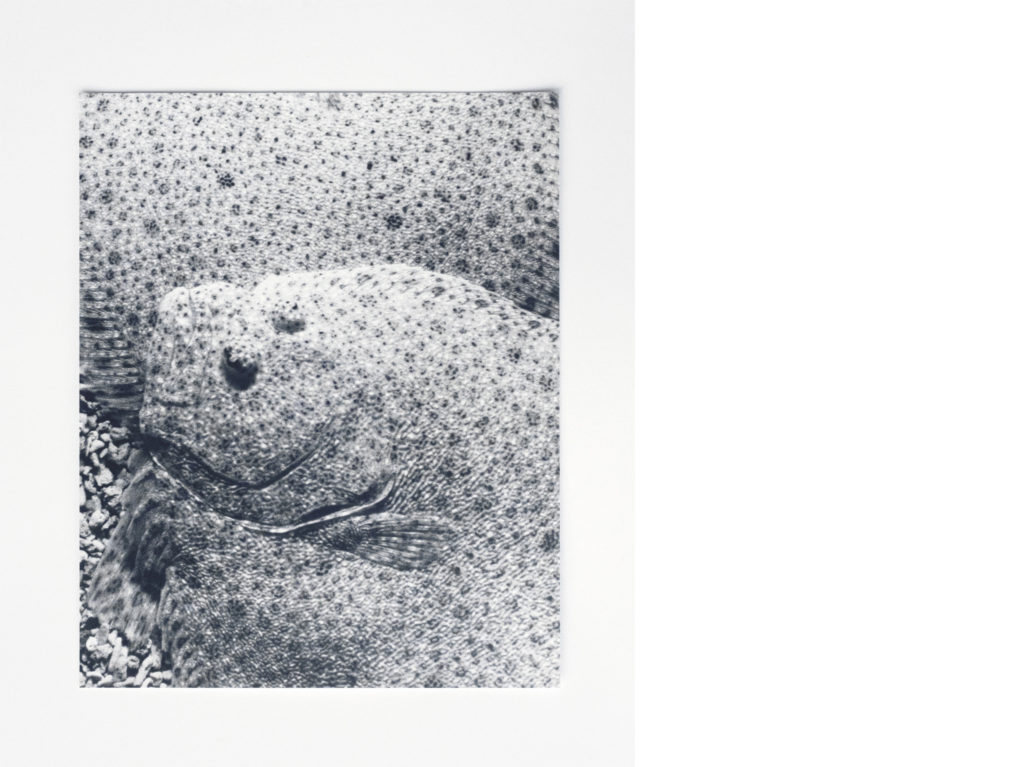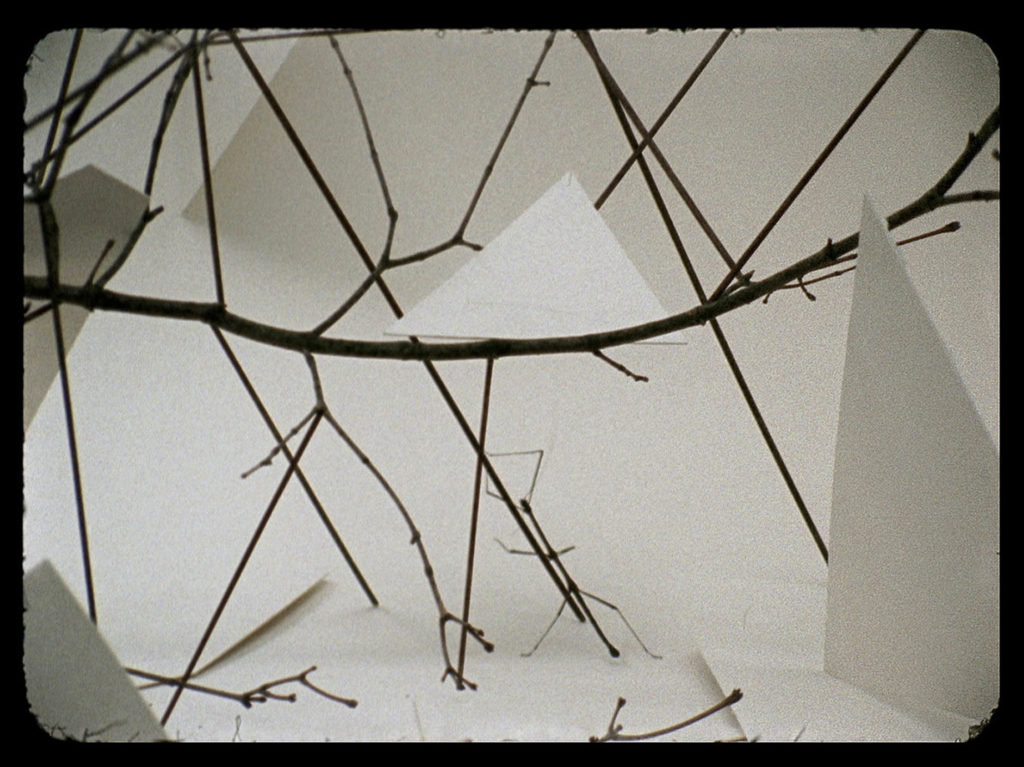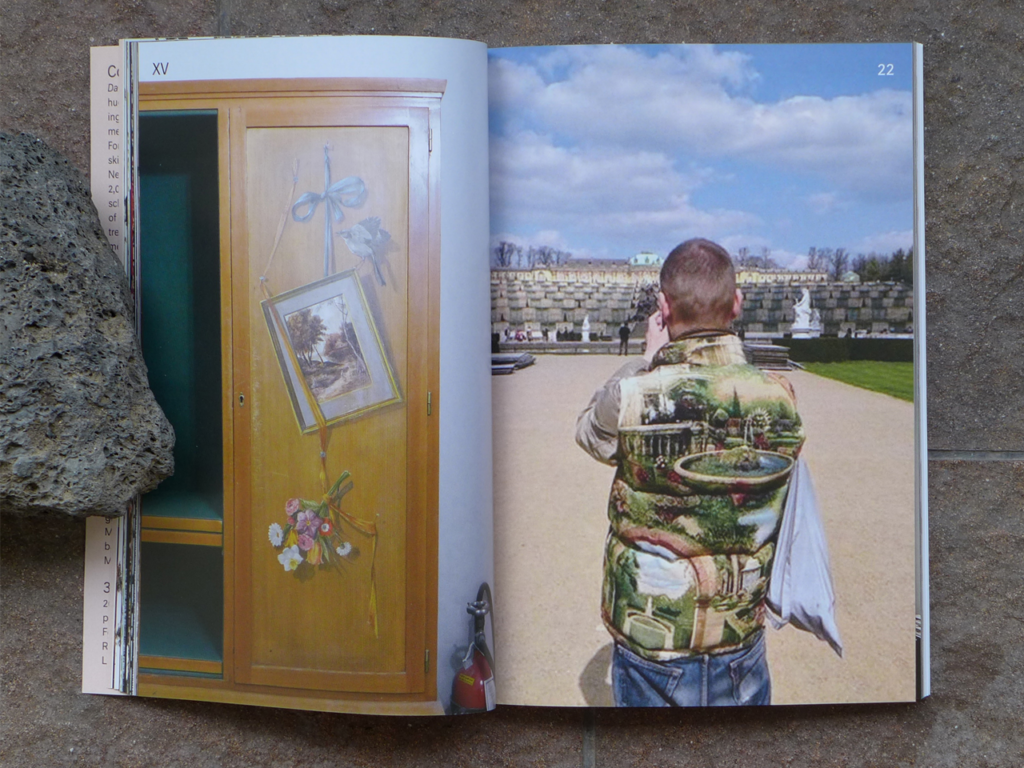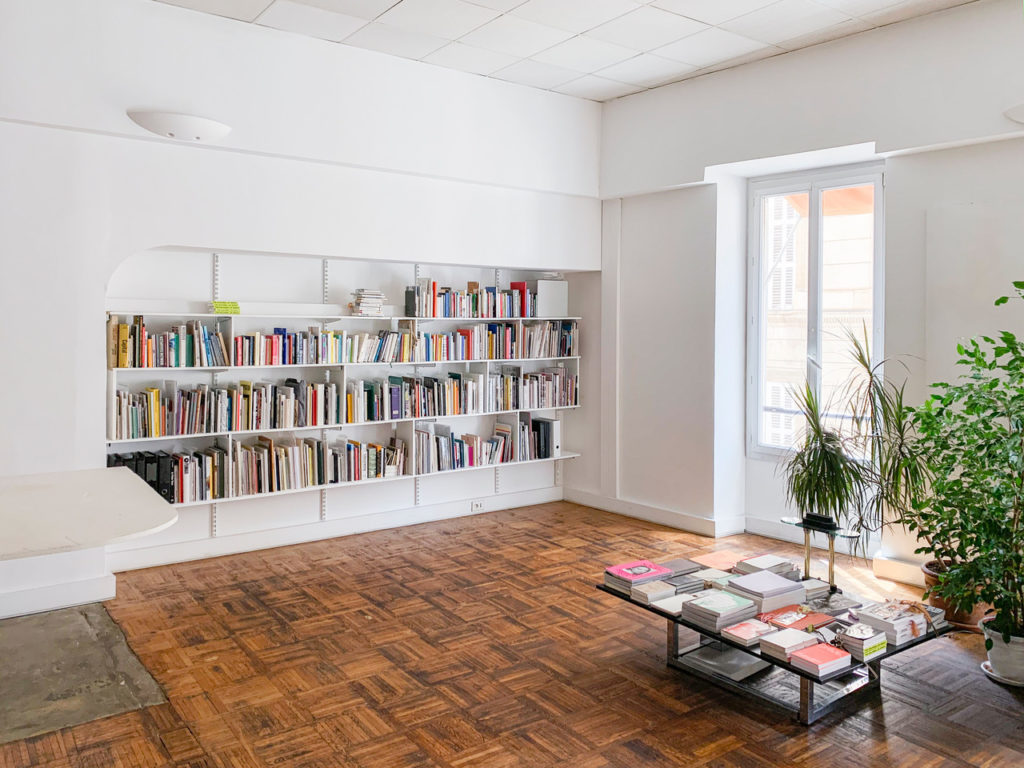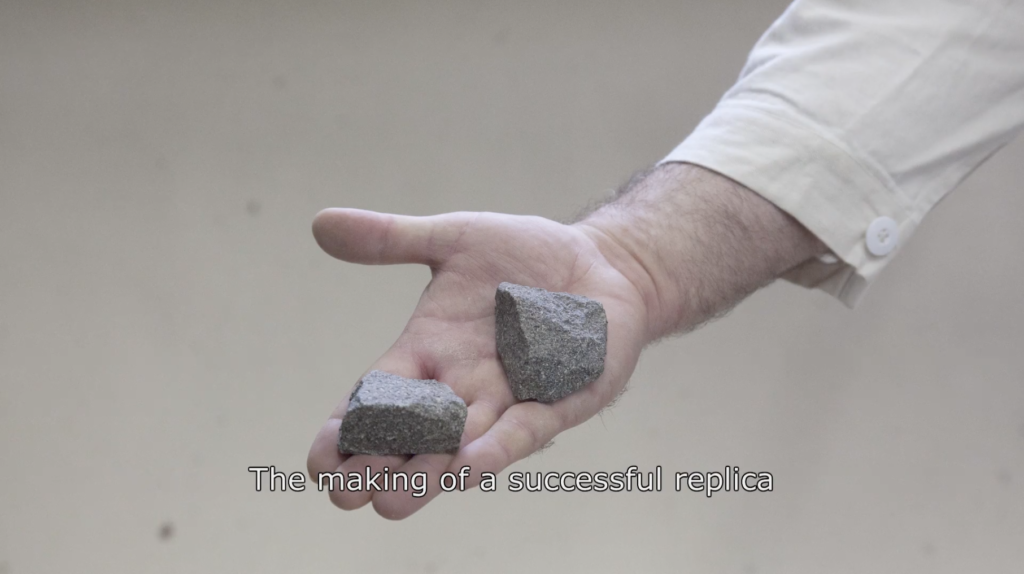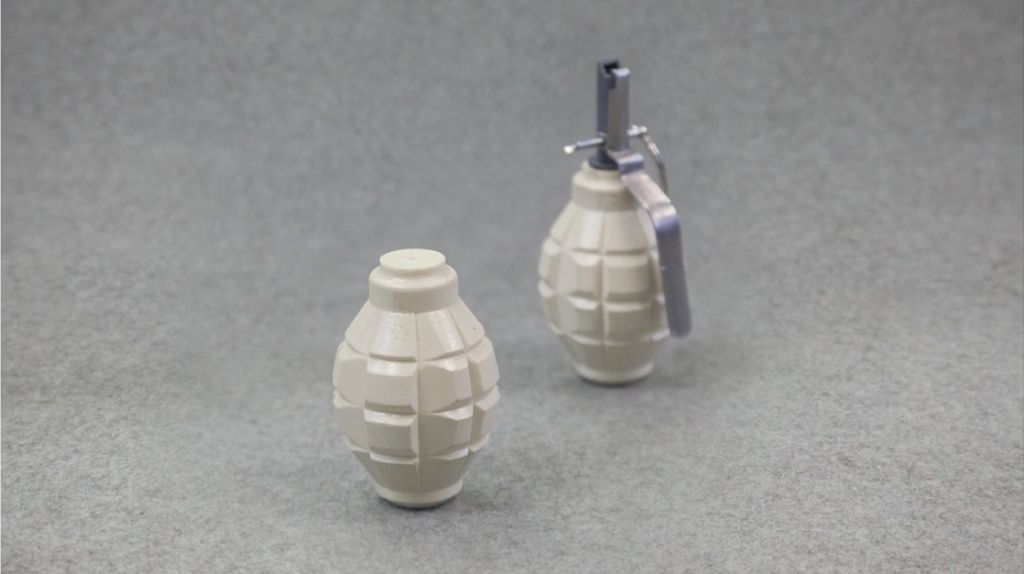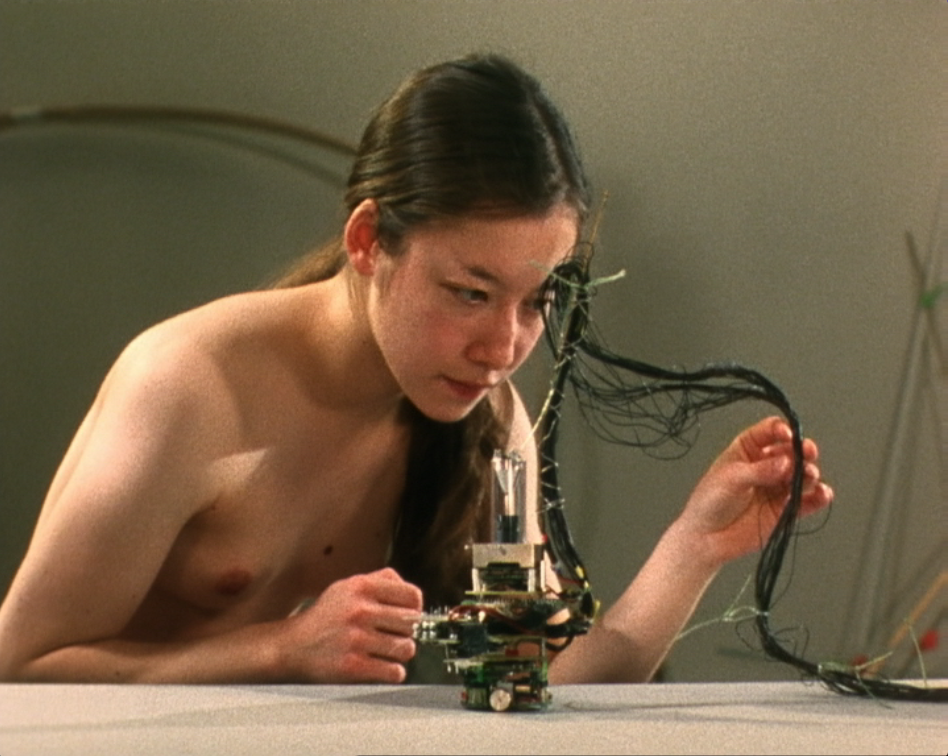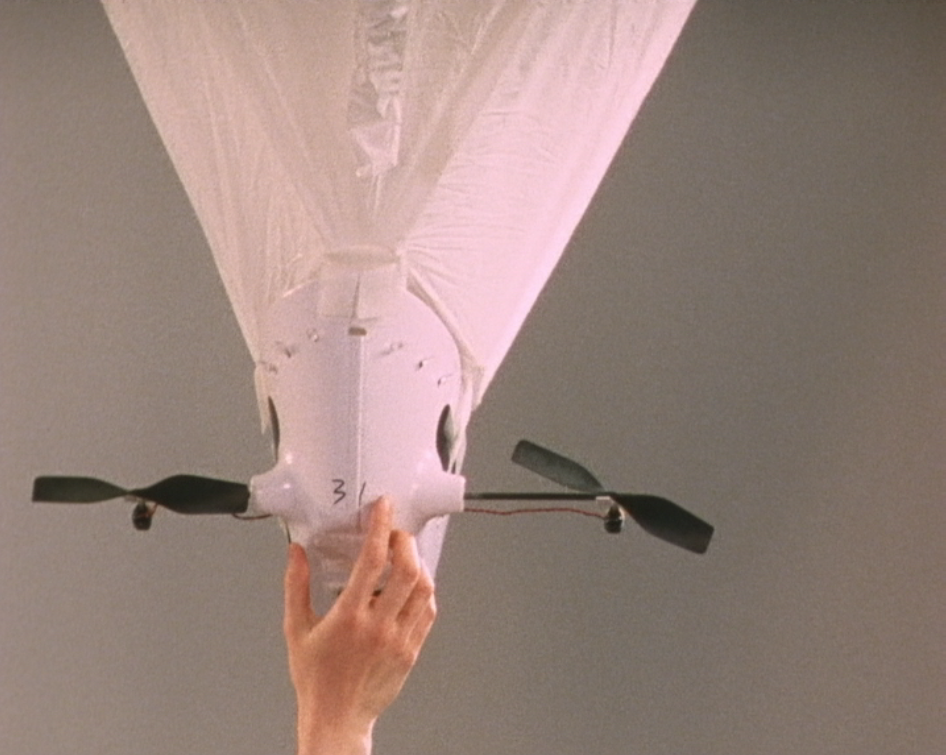Susanne Bürner
Mimicry—Empathy
du 12 mars au 5 juin 2022
from March 12 to June 5, 2022
Forme évolutive d’un projet initié en 2018 à la Fondation Lajevardi à Téhéran (Iran), Mimicry—Empathy aborde et questionne les domaines émotionnellement fragiles du mimétisme comme stratégie de survie. Du 12 mars au 5 juin Mimicry—Empathy prendra la forme d’une exposition collective réunissant 18 artistes et designers internationaux·ales, d’un programme public comprenant la projection d’une série de films, des conférences autour de la publication Mimicry—Empathy A Reader and Exhibition Document, et un cycle de workshops soutenant un programme de médiation adaptée à toutes et tous.
As an evolving form of a project initiated in 2018 at the Lajevardi Foundation in Tehran (Iran), Mimicry—Empathy addresses and questions the emotionally sensitive areas of mimicry as a survival strategy. From March 12 to June 5, Mimicry—Empathy will be embodied in an exhibition bringing together the work of 18 international artists and designers, a public programme including a series of screenings, talks around the Mimicry—Empathy A Reader and Exhibition Document publication, and a series of workshops supporting an art outreach programme adapted to all.
Susanne Bürner est une artiste basée à Berlin. À travers un large spectre de sujets, elle explore les dimensions psychologiques des images, dirigeant l’attention du·de la spectateur·rice sur les questions de présence et d’absence incluant sa projection personnelle. L’architecture joue un rôle essentiel dans son travail, comme tentative humaine de structuration de l’espace et de la société, et d’agencement méthodique de nos vies.
Son travail a été exposé au Los Angeles Filmforum, CAPC Bordeaux, Hamburger Bahnhof Berlin, Hygiene Museum Dresden, Kunstraum Kreuzberg, South London Gallery, Fotomuseum Winterthur. Elle a organisé des expositions et des projections à la Galerie Giti Nourbakhsch Berlin, L40 Berlin, Videonale Bonn et Lajevardi Foundation Tehran.
Susanne Bürner is an artist based in Berlin. Over a wide range of subject matter, she explores the psychological dimensions of images, directing the viewer’s attention to questions of presence and absence, as well as to the projection of the viewer herself. Architecture plays a key role in her work as the human attempt of structuring space and society, as a method and attempt of ordering life.
Susanne Bürner’s work has been shown extensively at locations including the Los Angeles Filmforum, CAPC Bordeaux, Hamburger Bahnhof Berlin, Hygiene Museum Dresden, Kunstraum Kreuzberg, South London Gallery, Fotomuseum Winterthur. She curated exhibitions and screenings at Galerie Giti Nourbakhsch Berlin, L40 Berlin, Videonale Bonn and Lajevardi Foundation Tehran.
✽
Mimicry—Empathy
Exposition
Friche la Belle de Mai
Mimicry—Empathy
Exhibition
Friche la Belle de Mai
Caroline Achaintre (FR), Armin Alian (IR), BLESS (AT, DE), Ulla von Brandenburg (DE), Susanne Bürner (DE), Berta Fischer (DE), Wiktor Gutt / Waldemar Raniszewski (PL), Sofia Hultén (DE), Annette Kelm (DE), Jochen Lempert (DE), Alexandra Leykauf (DE), Sonya Schönberger (DE), Anika Schwarzlose (DE), Daniel Steegmann Mangrané (ES/BR), Vera von Lehndorff / Holger Trülzsch (DE)
Caroline Achaintre (FR), Armin Alian (IR), BLESS (AT, DE), Ulla von Brandenburg (DE), Susanne Bürner (DE), Berta Fischer (DE), Wiktor Gutt / Waldemar Raniszewski (PL), Sofia Hultén (DE), Annette Kelm (DE), Jochen Lempert (DE), Alexandra Leykauf (DE), Sonya Schönberger (DE), Anika Schwarzlose (DE), Daniel Steegmann Mangrané (ES/BR), Vera von Lehndorff / Holger Trülzsch (DE)
Prenant la biologie comme point initial, les œuvres de l’exposition explorent les processus mimétiques fondés sur la compréhension de l’autre et l’empathie pour son vis-à-vis. Elles présentent des techniques d’assimilation à un contexte donné ; abordent la dissimulation et la disparition d’animaux et d’êtres humains ; dupent notre perception via le trompe-l’œil.
On pense généralement que ces mécanismes d’adaptation peuvent présenter un avantage pour l’organisme en question. Cependant, dans son essai « Mimétisme et psychasthénie légendaire », le sociologue Roger Caillois soutient que, contrairement aux idées reçues, les animaux se fondent dans leur environnement non pas pour leur propre bien, mais par désir mythologique de dissolution dans le monde. Les œuvres de l’exposition interrogent cette relation entre l’intention pragmatique de devenir autre et l’émancipation de cette finalité même. Après tout, une véritable empathie n’est viable qu’en l’absence de but. La capacité à faire cette distinction est la clé du développement d’une identité propre.
Le psychanalyste Gohar Homayounpour déclare dans Contre l’empath«isme»: “Le mot clé d’une véritable empathie réside dans la « séparation », dans la capacité essentielle à reconnaître la différence. Sinon, je ne fais qu’apprendre à vous connaître pour vous attaquer, pour vous manger. Car mon narcissisme insatiable a besoin d’être nourri encore et encore.”
Les œuvres de Mimicry—Empathy négocient de diverses manières la formation des identités par le biais du mimétisme expérimental. Les visiteur·ses sont invité·es à découvrir des images de soi dans le miroir de l’exposition.
Mimicry-Empathy est un projet qui peut prendre différentes formes selon les lieux où il est présenté. Montré pour la première fois en 2018 à la Fondation Lajevardi à Téhéran sous la forme d’une exposition accompagnée de projections, d’ateliers et de conférences, il a été suivi en 2020 par un livre éponyme. Le projet développera de nouvelles formes dans d’autres lieux.
Susanne Bürner
Taking biology as a starting point, the works in the exhibition explore mimetic processes that are based on the understanding of and the empathizing with a counterpart. They present techniques of assimilation to a given context; they address the hiding and disappearance of animals and humans; and they deceive our perception through trompe-l’œil.
It is generally believed that these mechanisms of adaptation could be advantageous for the organism in question. However, in his essay Mimicry and Legendary Psychasthenia the sociologist Roger Caillois argues that contrary to popular belief, animals do not adapt to their environment for their own benefit, but rather out of a mythological desire to dissolve into the world. This relationship between the useful purpose of becoming another and the emancipation from that very purpose is put up for discussion in the works of the exhibition. After all, genuine empathy is only viable in the absence of purpose. The ability to make this distinction provides the key to developing one’s own identity.
The psychoanalyst Gohar Homayounpour states in Against Empath”ism”: “The keyword for genuine empathy lies within “separateness”, within the essential capacity to recognize difference. Otherwise, I am just getting to know you in order to prey upon you, so that I can eat you. For my insatiable narcissism needs to be fed over and over again.”
The works in the exhibition Mimicry—Empathy negotiate the formation of identities through experimental mimicry in various ways. Visitors are invited to discover images of their selves in the mirror of the exhibition.
Mimicry—Empathy is a project that can take on different forms according to the places where it is presented. It was first shown in 2018 at the Lajevardi Foundation in Tehran as an exhibition accompanied by screenings, workshops and talks. It was followed in 2020 by an eponymous book. In other places the project will develop new forms.
Susanne Bürner
Notes sur Mimicry—Empathy, Susanne Bürner
Mimicry—Empathy, Descriptions
Une exposition en partenariat avec la Friche la Belle de Mai, le Goethe-Institut Marseille.
Avec le soutien de l’IFA (Institut für Auslandsbeziehungen), la Bundeskanzleramt, la Behörde für Kultur und Medien Hamburg, l’Ambassade du Royaume des Pays Bas, le Mondriaan Fund, la Direction Régionale des Affaires Culturelles Provence-Alpes-Côte d’Azur – Ministère de la Culture, la Région Provence-Alpes-Côte d’Azur, le Conseil Départemental des Bouches-du-Rhône, la Ville de Marseille.
Notes on Mimicry—Empathy, Susanne Bürner
Mimicry—Empathy, Descriptions
In partnership with the Friche la Belle de Mai and the Goethe-Institut Marseille.
With the support of IFA (Institut für Auslandsbeziehungen), Bundeskanzleramt, Behörde für Kultur und Medien Hamburg, Embassy of the Kingdom of the Netherlands, Mondriaan Fund, Direction Régionale des Affaires Culturelles Provence-Alpes-Côte d’Azur -Ministère de la Culture, Région Provence-Alpes-Côte d’Azur, Conseil Départemental des Bouches-du-Rhône, Ville de Marseille.
Visite, informations pratiques
Mimicry—Empathy Exposition
Date : du 12 mars au 5 juin 2022
Lieu : Tour Jobin, 4 ème étage,
Friche la Belle de Mai, Marseille
Visit, useful information
Mimicry—Empathy Exhibition
Date : from March 12 to June 5, 2022
Location : Tour Jobin, 4th Floor
Friche la Belle de Mai, Marseille
✽
Mimicry—Empathy
Conversation
Chez Giselle’s Books
Rencontres / lectures avec :
Marie de Brugerolle (commissaire, FR)
Susanne Bürner (artiste, DE)
Amirali Ghasemi (commissaire, IR)
Alexandra Leykauf (artiste, DE)
Installation de BLESS (AT, DE)
Iran Blankets, 2018
Dans le cadre de l’exposition Mimicry—Empathy organisée par Fræme à la Friche la Belle de Mai
La publication Mimicry—Empathy (éd. Susanne Bürner / Monroe Books) lancée en janvier 2022, est l’une des différentes formes que prend ce vaste projet initié en 2018 à la Fondation Lajevardi à Téhéran (Iran). Le livre comprend des textes de : Roy R. Behrens, professeur d’art et chercheur émérite à l’Université de Northern Iowa (USA) ; Marie de Brugerolle, commissaire et critique d’art (Lyon, France) ; Roger Caillois, écrivain, sociologue et critique littéraire (France) ; Johan Hartle, directeur de l’académie für Bildende Künste (Vienne, Autriche) ; Gohar Homayounpou, psychanalyste (Téhéran, Iran) ; ainsi que des conversations avec l’ancienne agente de la CIA Jonna Mendez (Washington, DC, USA), et les curateur·rices indépendant·es Anne-Sophie Dinant (Bordeaux, France) et Amirali Ghasemi (Téhéran, Iran). L’objet est à la fois autonome, singulier, et entre dans la compréhension d’une équation plus complexe.
Cette soirée, ponctuée d’interventions d’artistes et de commissaires, est aussi l’occasion de découvrir une sélection d’ouvrages issus du fond de Giselle’s Books en partenariat avec la Bibliothèque de l’École des Beaux-Arts de Marseille, un établissement INSEAMM.
Giselle’s Books
Fondé par Lucas Jacques-Witz et Ryder Morey-Weale en tant qu’espace d’expositions, Giselle est conçu comme un vecteur d’interactions se concentrant sur le rassemblement et la dispersion de pratiques artistiques. Il opère actuellement sous Giselle’s Books, une bibliothèque d’archives de livres d’artistes et d’écrits sur l’art.
Partenaires : Goethe-Institut Marseille, Giselle’s Books, Monroe Books, École des Beaux-arts de Marseille, INSEAMM
Visite, informations pratiques
Mimicry—Empathy Conversation
Date : 12 mars 2022
Horaires : 19h-22h
Lieu : Giselle’s Books, 28 Rue des Convalescents, 13001 Marseille
Mimicry—Empathy
Conversation
At Giselle’s Books
Talks with :
Marie de Brugerolle (commissaire, FR)
Susanne Bürner (artiste, DE)
Amirali Ghasemi (commissaire, IR)
Alexandra Leykauf (artiste, DE)
Installation of BLESS (AT, DE)
Iran Blankets, 2018
As part of the Mimicry-Empathy exhibition organised by Fræme at the Friche la Belle de Mai
The publication Mimicry-Empathy (ed. Susanne Bürner / Monroe Books), launched in January 2022, is one of several forms of this extensive project initiated in 2018 at the Lajevardi Foundation in Tehran, Iran. The book includes texts by: Roy R. Behrens, Professor of Art and Distinguished Scholar at the University of Northern Iowa (USA); Marie de Brugerolle, curator and art critic (Lyon, France); Roger Caillois, writer, sociologist and literary critic (France); Johan Hartle, Director of the Academy of Fine Arts (Vienna, Austria); Gohar Homayounpou, psychoanalyst (Tehran, Iran); as well as conversations with former CIA agent Jonna Mendez (Washington, DC, USA), and independent curators Anne-Sophie Dinant (Bordeaux, France) and Amirali Ghasemi (Tehran, Iran). The object is at once autonomous, singular, and part of the understanding of a more complex equation.
This evening, punctuated by interventions from artists and curators, is also an opportunity to discover a selection of publications from the Giselle’s Books collection in partnership with the Library of the Marseille School of Fine Arts, an INSEAMM institution.
Giselle’s Books
Founded by Lucas Jacques-Witz and Ryder Morey-Weale as an exhibition space, Giselle is conceived as a vector of interaction focusing on the gathering and dispersal of artistic practices. It currently operates as Giselle’s Books, an archival library of artists’ books and art writing.
Partnerships : Goethe-Institut Marseille, Giselle’s Books, Monroe Books, École des Beaux-arts de Marseille, INSEAMM
Visit, useful information
Mimicry—Empathy Conversation
Date: March 12, 2022
Hours: 7-10pm
Location: Giselle’s Books, 28 Rue des Convalescents, 13001 Marseille
✽
Mimicry—Empathy
Séances
Friche la Belle de Mai
Mimicry—Empathy
Screenings
Friche la Belle de Mai
Fræme and Susanne Bürner invite you to discover a series of experimental films exploring the similar yet varying paths of various artists living across the globe. The approaches frequently deal with the body, image, and surrounding sceneries. The program reveals both the vulnerability of human beings and the way they choose to protect/express themselves in confrontation with the outside world.
Adapting to invisibility – Curaté par Amirali Ghasemi (IR)
Anahita Hekmat (IR), Nebras Hoveizavi (IR/USA), Tessa Knapp (DE), Tala Madani (IR/USA), Payam Mofidi (IR), Ronak Moshtaghi (IR), Narges Nasseri (IR), Hamed Sahihi (IR), Mehdi Shiri (IR), Simin Yaghoubi (IR)
Amirali Ghasemi (IR) est un commissaire indépendant iranien, artiste media et designer graphique. Il est le fondateur et directeur de Parkingallery, un espace d’art à Téhéran, qui s’est imposé comme une plateforme accessible pour les jeunes artistes iraniens, valorisan l’art contemporain iranien à travers des projets tels que Deep Depression (2004-06) et Sideways (2008). Il a co-organisé « Urban Jealousy », la première Biennale Internationale Itinérante de Téhéran (2008–09) et huit éditions du Limited Access Festival for Video and Performance (2007–19). Commissaire invité au CCBrugge (2010), il a également assuré en tant que commissaire indépendant des programmations vidéo telles que « The Invisible Present » au Brésil et aux États-Unis. Il a programmé une section d’art vidéo pour les festivals de cinéma de Rotterdam et de Göteborg (janvier-février 2013). Il a rejoint le Master’s course intitulé Art in Context à l’Université des arts de Berlin en 2015, retournant en Iran en 2017 pour se concentrer sur ses projets curatoriaux à l’Iranian New Media Society (INMS) et à la Tamaas Foundation for Media Arts ainsi que sur sa pratique d’écriture.
Adapting to invisibility – Curated by Amirali Ghasemi (IR)
Anahita Hekmat (IR), Nebras Hoveizavi (IR/USA), Tessa Knapp (DE), Tala Madani (IR/USA), Payam Mofidi (IR), Ronak Moshtaghi (IR), Narges Nasseri (IR), Hamed Sahihi (IR), Mehdi Shiri (IR), Simin Yaghoubi (IR)
Amirali Ghasemi (IR) is an Iranian independent curator, media artist, and graphic designer. He is the founder and director of Parkingallery, an art space in Tehran, which has established itself as an accessible platform for young Iranian artists, presenting contemporary art in Iran through projects such as Deep Depression (2004–06) and Sideways (2008). He co-curated “Urban Jealousy,” the 1st International Roaming Biennial of Tehran (2008–09) and eight editions of the Limited Access Festival for Video and Performance (2007–19). Guest curator for CCBrugge (2010), he has also independently curated video programs such as “The Invisible Present” in Brazil and in the United States. He programmed a video art section for the Rotterdam and Göteborg film festivals (January–February 2013). He joined the Master’s course titled Art in Context at the Berlin University of the Arts in 2015, returning to Iran in 2017 to focus on his curatorial projects at the Iranian New Media Society (INMS) and Tamaas Foundation for Media Arts, as well as his writing practice.
Une image — Curaté par Anne-Sophie Dinant (BE)
Susanne Bürner (DE), Harun Farocki (CZ/DE), Daria Martin (USA), James Richards (UK)
Anne-Sophie Dinant (BE) est une commissaire indépendante basée en France. Elle a été conservatrice au CAPC musée d’art contemporain de Bordeaux (2014-18) où elle a organisé L’Ecran, une série d’expositions de films et de vidéos. Parmi les autres expositions et programmations de films récentes qu’elle a organisées figurent Clément Cogitore, Base sous-marine, Bordeaux (2019) ; For as Long as You Like, Gaudel de Stampa, Paris (2014) ; Reflections without Sun, Musée M, Louvain (2013) ; Acting for the Camera. Acting with the Camera, Arnolfini, Bristol (2012). Précédemment commissaire associée à la South London Gallery (2007-2012), elle a organisé des expositions de Manon de Boer et Charles Atlas, ainsi que des projections et des performances d’artistes tels que Babette Mangolte, Eleanor Antin, Gisèle Vienne, Claire Fontaine et Jessica Warboys. Elle a également organisé des projections de films et de vidéos à la Tate Modern, au British Film Institute (BFI) et à l’ICA de Londres. Ses écrits sont apparus dans des livres d’artistes et des magazines d’art tels que Artpress et Mousse.
Une image — Curated by Anne-Sophie Dinant (BE)
Susanne Bürner (DE), Harun Farocki (CZ/DE), Daria Martin (USA), James Richards (UK)
Shapeshift, Brian McKenna & Anika Schwarzlose (2016)
Shapeshift, Brian McKenna & Anika Schwarzlose (2016)
Mimicry—Empathy Séances
Horaires : 17h-22h
Mimicry—Empathy Screenings
Date : May 26
Hours : from 5 pm to 10 pm
Location : Petit Plateau, Friche la Belle de Mai, Marseille
✽
Mimicry—Empathy
Médiation, programme public
Friche la Belle de Mai
Mimicry—Empathy
Art Outreach, Public Program
Friche la Belle de Mai
Pendant l’exposition, les équipes de médiation de Fræme et de la Friche la Belle de Mai s’associent pour proposer une série d’ateliers soutenant un programme de médiation adapté à tous·tes.
Terrain Commun, Friche la Belle de Mai
Dans le cadre du programme Terrain Commun#1 soutenu par les résident·es pour les 30 ans de la Friche la Belle de Mai, BSM et FRÆME proposent un stage autour de l’exposition Mimicry – Empathy.
Mimicry – Empathy s’intéresse davantage au processus même de transformation qu’à l’image visée et aborde ainsi la formation de l’identité par l’expérience multiple du mimétisme. Dans la pratique du skate se pose la question des espaces interdits à expérimenter en passant sous les radars d’un espace urbain sous contrôle, et celle des codes vestimentaires, qui font identification, notamment à l’âge adolescent. Ainsi ce stage sera l’occasion de créer autour des notions de camouflage et d’identification, des artefacts permettant aux jeunes skateur·euses de se fondre dans les différents espaces de la Friche.
During the exhibition, the arts outreach teams of the Fræme and the Friche la Belle de Mai join together to offer a series of workshops supporting a mediation programme adapted to all.
Terrain Commun, Fiche la Belle de Mai
As part of the Terrain Commun#1 program supported by the members of Friche la Belle de Mai, BSM and FRÆME are initiating a workshop around the exhibition.
Mimicry – Empathy is more interested in the process of transformation than in the image itself and thus addresses the formation of identity through various experiences of mimicry. The practice of skateboarding questions how forbidden spaces can be experienced with by passing under the radar of an urban space under control, and that of dress codes which are a source of identification particularly at the adolescent age. This workshop will be an opportunity to create artefacts around the notions of camouflage and identification, allowing young skateboarders to blend into the different spaces of La Friche.
Horaires : 9h30-16h00
Inscription : walks.bsm@gmail.com — 06 60 83 96 94
Tarifs : 290€
Stage ouvert aux jeunes de 10 à 15 ans
Hours : 9:30 am to 4pm
Registration : walks.bsm@gmail.com — 06 60 83 96 94
Rate : 290€
Workshop open to young people aged 10 to 15.
Pendant l’exposition, des visites adaptées destinées aux jeunes publics sont au programme.
Pour les visites scolaires accompagnées de l’exposition Mimicry—Empathy merci de contacter Magali Delrieu à md@fraeme.art
During the exhibition, adapted visits for young audiences are scheduled.
For accompanied school visits to the Mimicry-Empathy exhibition, please contact Magali Delrieu at md@fraeme.art
✽
Crédit images :
En-tête — Wiktor Gutt, Waldemar Raniszewski, Expressions on a Face, 1981. diaporama de photographies, video, 11:13 min., musique: tribal music and TSA rock band. Courtesy de l’artiste et Pola Magnetyczne Gallery, Varsovie
Galerie (dans l’ordre) — Ulla von Brandenburg, It Has a Golden Sun and an Elderly Grey Moon, 2016. Film super-16-mm transféré sur video, couleur, son, 22 min 25 sec., Edition de 5. Courtesy Galerie Art : Concept, Paris
Sofia Hultén, Grey Area, 2001. Vidéo, 9 min. boucle. Courtesy Sofia Hultén et Daniel Marzona, Berlin
Susanne Bürner, Seide für V.B, A.P., B.D. und M.A., 2018. Tirages Fine Art surpapier Koh-I-Noor, 70 x 100 cm, 1/5 + 2 AP. Courtesy de l’artiste
Jochen Lempert, untitled (Mimikry und Einfuehlung), 2018. Épreuve gélatino-argentique © Jochen Lempert/VG Bild-Kunst, Bonn 2018, Courtesy de BQ, Berlin etProjecteSD , Barcelona
Daniel Steegmann Mangrané, Phasmides, 2012. Film 16 mm transféré en vidéo HD,couleur, 22 min 41 sec (taille de projection : 130×95 cm). Courtesy Galerie EstherSchipper.
Wiktor Gutt, Waldemar Raniszewski, Expressions on a Face, 1981. diaporama de photographies, video, 11:13 min., musique: tribal music and TSA rock band. Courtesy de l’artiste et Pola Magnetyczne Gallery, Varsovie
Séances : Brian McKenna & Anika Schwarzlose, Shapeshift, 2016. Vidéo, son, 20:37 min. (capture)
Darian Martin, Soft Materials, 2004. Film 16 mm numérisé, 10:50 min. (capture)
Credits:
Header — Wiktor Gutt, Waldemar Raniszewski, Expressions on a Face, 1981. Photographs as slide show, video, 11:13 min., music: tribal music and TSA rock band. Courtesy the artist and Pola Magnetyczne Gallery, Warsaw
Slideshow (in order)— Ulla von Brandenburg, It Has a Golden Sun and an Elderly Grey Moon, 2016. Super- 16-mm film transferred to video, color, sound, 22 min 25 sec., Edition of 5. Courtesy Galerie Art : Concept, Paris
Sofia Hultén, Grey Area, 2001. Vidéo, 9 min. loop. Courtesy Sofia Hultén and DanielMarzona, Berlin
Susanne Bürner, Seide für V.B, A.P., B.D. und M.A., 2018. Fine Art prints on Koh-I-Noor Paper, 70 x 100 cm, 1/5 + 2 AP. Courtesy the artist
Jochen Lempert, untitled (Mimikry und Einfuehlung), 2018. Gelatin silver print © Jochen Lempert/VG Bild-Kunst, Bonn 2018, Courtesy BQ, Berlin and ProjecteSD , Barcelona
Daniel Steegmann Mangrané, Phasmides, 2012. 16mm film transferred to HD video,color, mute 22 min 41sec (projection size: 130×95 cm). Courtesy Galerie EstherSchipper
Wiktor Gutt, Waldemar Raniszewski, Expressions on a Face, 1981. Photographs as slide show, video, 11:13 min., music: tribal music and TSA rock band. Courtesy the artist and Pola Magnetyczne Gallery, Warsaw
Screenings : Brian McKenna & Anika Schwarzlose, Shapeshift, 2016. Video, audio, 20:37 min. (screenshot)
Darian Martin, Soft Materials, 2004. 16 mm film digitized, 10:50 min. (screenshot)
L’accès du public aux espaces d’expositions est soumis à la présentation d’un pass vaccinal depuis le 24 janvier 2022.
Le pass sanitaire reste en vigueur pour les mineurs de 12 à 15 ans.
Plus d’informations ici.
As of 24 January 2022, visitors over the age of 16 years must present a vaccination pass.
The health pass remains in force for minors aged 12 to 15 years.
Contactez-nous à contact@fraeme.art
Inscrivez-vous à la newsletter, ici!
Contact us at contact@fraeme.art
Subscribe to our newsletter, here!
